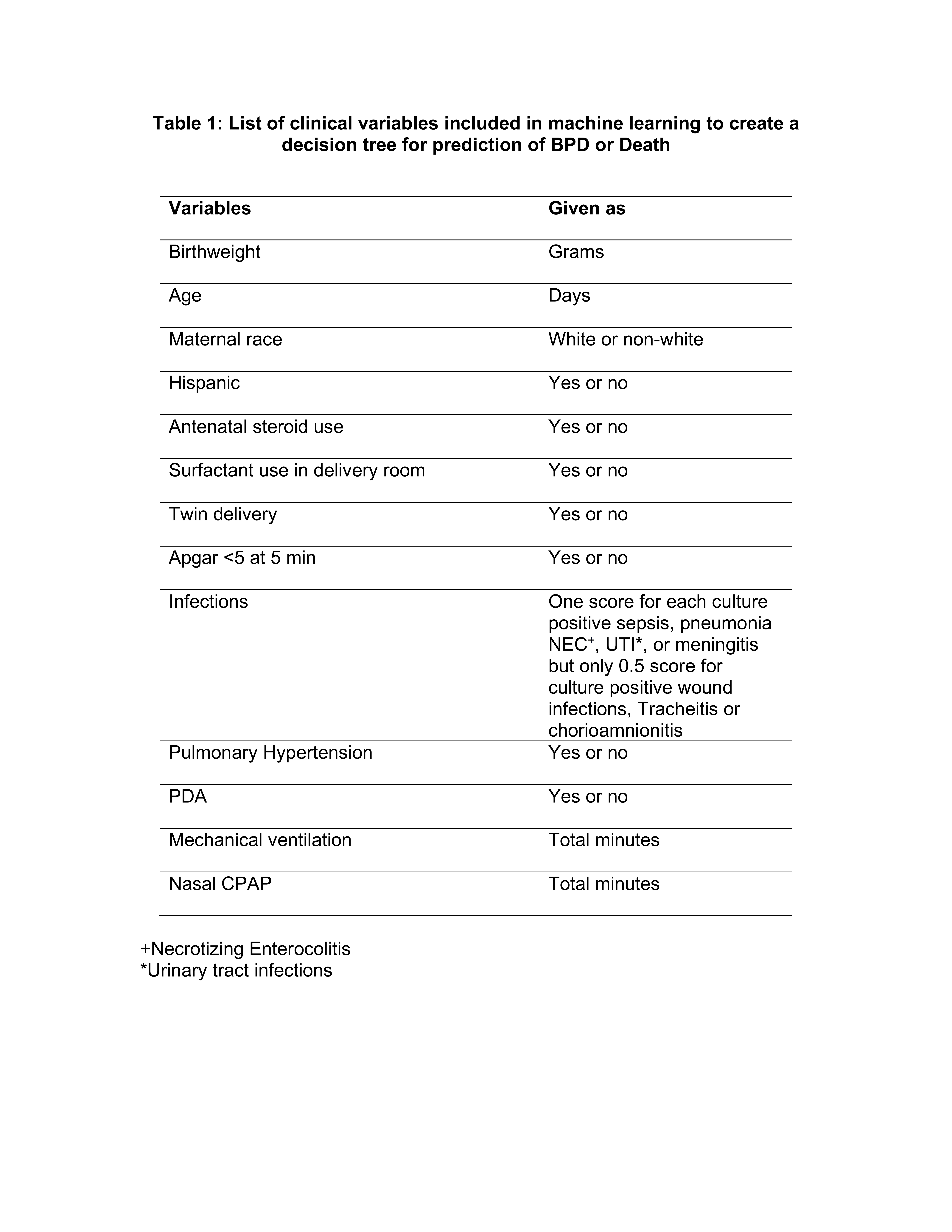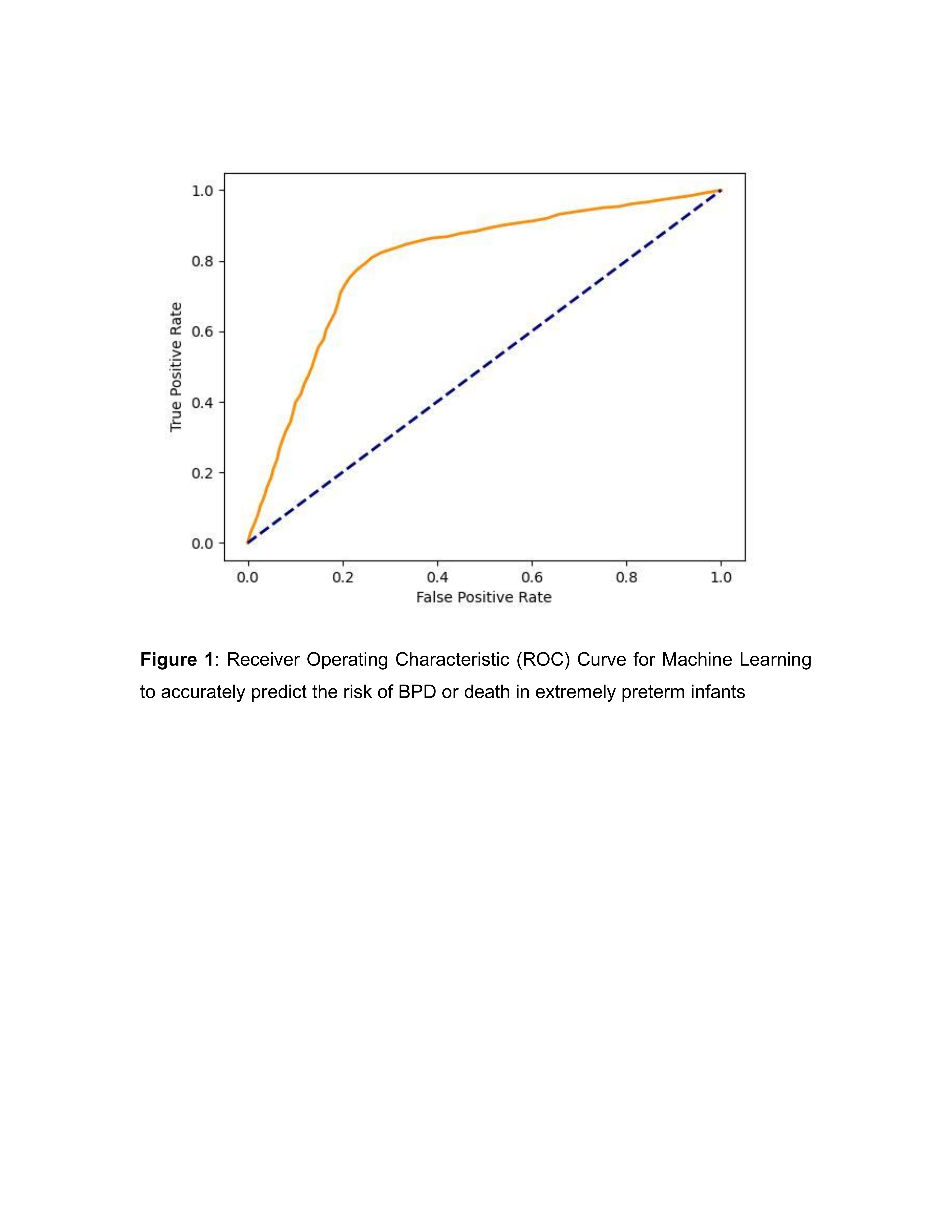Neonatal Pulmonology
Neonatal Pulmonology 3: BPD Clinical and Translational
269 - Use of Machine Learning Methodology for the Prediction of Broncho-Pulmonary Dysplasia in Extremely Preterm Infants
Sunday, April 30, 2023
3:30 PM - 6:00 PM ET
Poster Number: 269
Publication Number: 269.341
Publication Number: 269.341
Hussnain S. Mirza, Advent Health for Children/ UCF College of Medicine, Orlando, FL, United States; william oh, The Warren Alpert Medical School of Brown University, providence, RI, United States; Arash Mahyari, Florida institute for human and machine cognition, Pensacola, FL, United States

Hussnain S. Mirza, MD. MBA (he/him/his)
Associate Professor Pediatrics
Advent Health for Children/ UCF College of Medicine
Orlando, Florida, United States
Presenting Author(s)
Background: Broncho-pulmonary Dysplasia (BPD) is a common complication of extremely preterm infants and has a high mortality and morbidity. It is a multifactorial disease that is associated with lower birth weight, smaller gestation, gender, race, genetic predisposition, severity of respiratory disease, duration of mechanical ventilation, patent ductus arteriosus (PDA), pulmonary hypertension (PH), and infections etc. Previous studies using traditional statistical methodology have shown that a certain set of clinical variables can predict the occurrence of BPD. Artificial intelligence, specifically, machine learning can also be used in predicting the occurrence of BPD. The current study is to test the hypothesis that machine learning can accurately predict the risk of BPD in extremely preterm infants
Objective: To predict the occurrence of BPD in extremely preterm infants using machine learning methodology
Design/Methods: It is a retrospective study of preterm infants born at < 28 weeks gestation who were admitted to the NICU at Advent Health for Children from 1/1/2013 to 12/31/2018. Our center is member of the Children Hospitals Association (CHA) and we routinely collect clinical and epidemiologic data for the CHA network. All variables are pre-defined, and a trained nurse collect data following a standard guideline. Local data were retrieved after IRB approval. Data were split in 2 sets; a larger cohort was randomly selected for machine learning and a smaller cohort was separated for algorithm testing (80% and 20% of the database respectively). Using the training dataset, a forest algorithm (decision tree) was created that was applied on smaller cohort to test the accuracy of the algorithm.
Results: The dataset consists of 362 infants. Three infants were excluded for incomplete or missing data. Of the remaining 359 infants, 197 were classified as BPD or death and 162 infants had no BPD. Using the training cohort, we developed a forest algorithm (decision tree) based on several clinical & epidemiologic variables i.e., birth weight, gestation, gender, race, mode of delivery, low apgars, use of antenatal steroids, surfactant in the delivery room, duration of positive pressure ventilation, patent ductus arteriosus and pulmonary hypertension. When tested using the remaining cohort (20% of the database), this forest algorithm had 81% predictability for BPD or death
Conclusion(s): Machine learning can be adopted to predict the risk of BPD or death in extremely preterm infants


